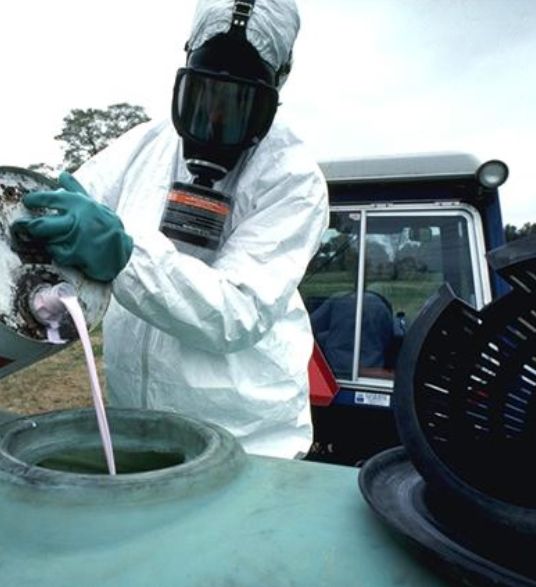
Preemergent Pesticides Defined
Preemergent pesticides are chemicals designed to interfere with seed germination and growth of broadleaf weeds (and some narrow leaf weeds) by suppressing a critical enzyme prior to emergence of sprouts from the soil, preventing the seeds from completing their lifecycle.
Overview
This post spotlights a citizen’s investigation of the prohibited use of mulitiple preemergent pesticides by the Roads Department of a rural California county, and that county government’s subsequent lack of openness and transparency to its impacted citizens regarding multiple California Code of Regulations (CCR) wellhead violations against “persons, animals, and property” as affirmed by the findings of an investigation conducted by the County Agricultural Commissioner’s Office.
State regulations created to protect persons, animals, and property were repeatedly violated by the County Roads Department’s negligent use of prohibited preemergent pesticides in the course of conducting its roadside vegetation management program within restricted proximity to wellheads.
Violations of California Code of Regulations (Title 3. Food and Agriculture) Division 6. Pesticides and Pest Control Operations

California Code of Regulations 6600(e) General Standards of Care: “Exercise reasonable precautions to avoid contamination of the environment.”

California Code of Regulations 6609 Wellhead Protection: “...the following activities shall be prohibited within 100 feet of a well... application of preemergent herbicides... application of preemergent herbicides shall be prohibited between the berm and the wellhead.”

California Code of Regulations 6614(b)(2)(3) Protection of Persons, Animals, and Property: “Notwithstanding that substantial drift would be prevented, no pesticide application shall be made or continued when... there is a reasonable possibility of damage to nontarget crops, animals, or other public or private property, or... there is a reasonable possibility of contamination of nontarget public or private property, including the creation of a health hazard, preventing normal use of such property. In determining a health hazard, the amount of toxicity of the pesticide, the type and uses of the property and related factors shall be considered.”

California Code of Regulations 6800 Groundwater Protection: “Pesticides labeled for agricultural, outdoor institutional or outdoor industrial use that contain any of the following chemicals are designated as having the potential to pollute ground water.”


Incident
In 2016, citizens of a rural California county observed what appeared to be multiple violations by their county Roads Department of the state’s code of regulations pertaining to the use of pesticides.
As detailed above, regulations governing the use of preemergent pesticides in California are explicit, and had been enacted over a decade ago to protect California’s groundwater and wellheads.
One of the citizens searched the California Environmental Protection Agency’s website and located the Department of Pesticide Regulation’s “Laws and Regulations” regarding the use of pesticides in proximity to wellheads.
California Code of Regulations (Title 3. Food and Agriculture) Section 6609 Wellhead Protection describes the conditions under which the application of preemergent pesticides are prohibited within 100 feet of wellheads.
Wellheads lacking protective berms preventing movement of surface runoff water from the perimeter of the wellhead to the wellhead are specifically addressed, as are wellheads with protective berms where the application of preemergent pesticides is prohibited between the berm and the wellhead.
Preliminary Investigation
A biologist employed by the County Agricultural Commissioner’s Office was contacted by one of the citizens.
After a brief telephone consultation, the county biologist concluded that a site visit to conduct a preliminary investigation of the reported observations was justified.
Upon conducting the site visit, the biologist affirmed that the reported observations had considerable merit based upon the presence of ample visual evidence that California Code of Regulations (Title 3. Food and Agriculture) Section 6609 Wellhead Protection and Section 6800 Groundwater Protection List had been violated.
The biologist noted initial impressions, as well as photographically documenting several locations where the violations were believed to have been committed by the County Roads Department.
In addition to the County Roads Department’s alleged 2016 spraying of prohibited preemergent pesticides in restricted proximity to wellheads in order to “control vegetation in the roadside draining facilities,” the citizens subsequently learned that wellheads historically relied upon for household and livestock use may have also been compromised during several prior years with a variety of prohibited preemergent pesticides by the County Roads Department.
Section 6609 Wellhead Protection
California Code of Regulations (Title 3. Food and Agriculture) Section 6609 Wellhead Protection was adopted in May 2004.
An August 2005 letter from the Chief Enforcement Branch of the California Department of Pesticide Regulation to California’s County Agricultural Commissioners provided clarification of the meaning of the term “preemergent herbicides” per California Code of Regulations (Title 3. Food and Agriculture) Section 6609 Wellhead Protection.
That August 2005 correspondence from the California Department of Pesticide Regulation to all of California’s County Agricultural Commissioners reinforced the strict prohibition of the use of preemergent pesticides under specifically articulated conditions, and provided examples and guidance.

6800 Groundwater Protection, 6609 Wellhead Protection, 6600(e) General Standards of Care, and 6614(b)(2)(3) Protection of Persons, Animals, and Property.
Conclusions
Multiple wellheads, the primary sources of the water being relied upon for household use and livestock, had been repeatedly violated by the County Roads Department’s failure to comply with California's explicit code of regulations regarding the use of preemergent pesticides.
California Code of Regulations (Title 3. Food and Agriculture) Section 6609 Wellhead Protection (May 2004) was repeatedly violated when the County Roads Department sprayed mixtures containing multiple prohibited preemergent pesticides within 100 feet of protected wellheads in violation of California’s state-mandated minimum requirement.
The repeated violations by the County Roads Department of the 100-foot restricted zones protecting these wellheads are the direct byproduct of the department’s flawed pesticide procurement practices, compounded by routinely engaging in long-prohibited field practices.
At the conclusion of the investigation, the county was assessed a nominal fine that was paid without any admission of committing the alleged violations.
When impacted landowners and citizens requested a discussion with their elected District Supervisor regarding the multiple pesticide violations near wellheads, they were repeatedly denied.
The documented facts of the investigation revealed that these pesticide violations appear to be far greater in quantity and scale than the small sampling of wellheads included.
It was later discovered that a second wave of pesticide violations, of comparable magnitude, occurred two weeks after the violations that became the sole focus of the 2016 investigation.
The citizens assert that these acts of negligence committed by their County’s Roads Department against persons, animals, and property — and the county’s subsequent repeated failure to engage in explanatory dialogue with impacted landowners and citizens — constitutes a flagrant breach of the public trust requiring prompt remedy.
###
